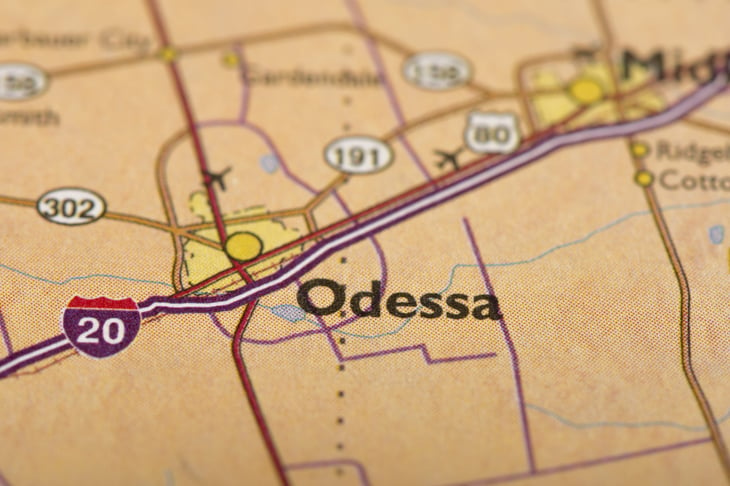
Homeownership often represents a foundation to build on as well as long-term stability. This applies not only to the lifestyle a homeowner envisions when making a purchase, but also to the value of the property.
Ideally, a home you purchase will steadily grow in value and not fluctuate too much in price. To that end, SmartAsset analyzed the data to uncover which metro areas in America are the best housing markets for growth and stability.
Specifically, we compared home value data in 357 metro areas for every quarter during the 25-year period from Q1 of 1995 through Q4 of 2019. For details on our data sources and how we put all the information together to create our final rankings, check out the data and methodology section next.
Data and methodology

To create our rankings of the best housing markets for growth and stability, we looked at data for 357 metro areas. Specifically, we compared all of the areas across the following two metrics:
- Stability. This is the probability that homeowners experienced a significant price decline (5% or more) at any point in the 10 years after they purchased the home.
- Overall home price growth. The total growth in home prices during the time period we analyzed.
All data comes from the Federal Housing Administration (FHA). It covers the 25-year period from Q1 of 1995 through Q4 of 2019.
We used these two metrics to create our final rankings. Areas received a score of 100 on the stability metric if there was a 0% chance of a significant price decline. The metro area with the highest chance of a significant price decline (45%) received a score of 0.
We scored all other metro areas based on where they fell between these two values. The metro area with the highest overall home price growth received a growth index score of 100 and the metro area with the lowest growth received a 0. We scored all other metro areas based on their percentage growth between these two values.
Finally, we averaged each metro area’s scores over the two metrics. The metro area with the highest average score ranked first.
10. Dallas-Plano-Irving, Texas

One of five Texas entries in our top 10 is the Dallas metro area. This metro area had a 1% chance of a home price loss of at least 5% within 10 years of purchase, within the 25-year period from 1995 through 2019.
During those 25 years, the overall increase in home price was 180.91%, 66th-highest in our study.
9. Houston-The Woodlands-Sugar Land, Texas

In the Houston, Texas, metro area, the chance of a drop in home value of at least 5% within 10 years of purchase was 0%.
This area placed 57th out of 357 in terms of growth, with an overall home value increase of 188.41% from 1995 through 2019.
8. Odessa, Texas

The third Texas metro in the top 10 is Odessa, where there was a 5% chance of the value of a home dropping at least 5% in the first 10 years after its purchase, within the 25-year period from 1995 through 2019.
Odessa home prices also had the 22nd-highest growth in the study, with overall home values jumping by 226.02% over those 25 years.
7. Bismarck, North Dakota

The housing market in the Bismarck, North Dakota, metro area was very stable over the past 25 years, with a 0% chance of a 5% housing price drop in the first 10 years after the purchase of a home.
Bismarck also came in 48th-highest out of 357 in our study for home price growth from 1995 through 2019, at 194.01%.
6. Fort Collins, Colorado

The Fort Collins, Colorado, metro area had a fairly stable housing market over the 25-year period from 1995 to 2019, with just 2.00% odds that a home’s price would drop by at least 5% in the 10 years after its purchase.
The overall increase in home value during that 25-year period was 215.20%, 31st-highest out of all 357 metro areas in this study.
5. San Jose-Sunnyvale-Santa Clara, California

The odds of experiencing a home price drop of 5% or more in the San Jose, California, metro area within 10 years of a home’s purchase was 19.00%.
In the 25 years from 1995 through 2019, the home price there increased 345.62%, the second-highest rate for this metric in our study.
4. San Francisco-San Mateo-Redwood City, California

Taking the No. 4 spot is the San Francisco, California, metro area, with odds at 19.00% of a 5% drop in home value over the 10 years after its purchase.
That said, the overall home price growth was 370.29% over the 25-year period from 1995 through 2019, the highest in our study.
3. Boulder, Colorado

The Boulder, Colorado, metro area also had a 0% chance of a 5% drop in housing price in the 10 years after it was purchased, within the time period from 1995 to 2019.
The overall growth in home prices in Boulder in those 25 years was 251.21%, the 15th-highest growth rate across all 357 metro areas in the study.
2. Austin-Round Rock-Georgetown, Texas

In the Austin, Texas, metro area, there was a 0% chance of a 5% loss in home price in the 10 years after it was purchased.
This area had the study’s 12th-highest growth rate in the 25-year period from 1995 through 2019, at 254.62%.
1. Midland, Texas

Midland, Texas, is the number one U.S. metro area for growth and stability in the housing market.
The odds of a 5% loss in home price in the 10 years after it was purchased (during the 25-year period from 1995 through 2019) was 0%, and the overall home price growth in that 25-year period was about 287.82%, the fourth-highest rate for this metric across all 357 areas we studied.
Tips for managing your money
Consider investing in expert help

If you’re in the market for a home, consider getting some help from an experienced adviser.
Finding the right financial adviser who fits your needs doesn’t have to be hard. SmartAsset’s free tool matches you with financial advisers in your area in 5 minutes.
If you’re ready to be matched with local advisers that will help you achieve your financial goals, get started now.
Ready to buy?

Decide whether you want to rent or buy before you leap into your housing search. SmartAsset has a tool that will help you make that choice based on your situation.
A clear picture of your payments

Know what your mortgage payment will be, regardless of the long-term outlook for your investment. This will play a significant role in planning your monthly budget.





Add a Comment
Our Policy: We welcome relevant and respectful comments in order to foster healthy and informative discussions. All other comments may be removed. Comments with links are automatically held for moderation.